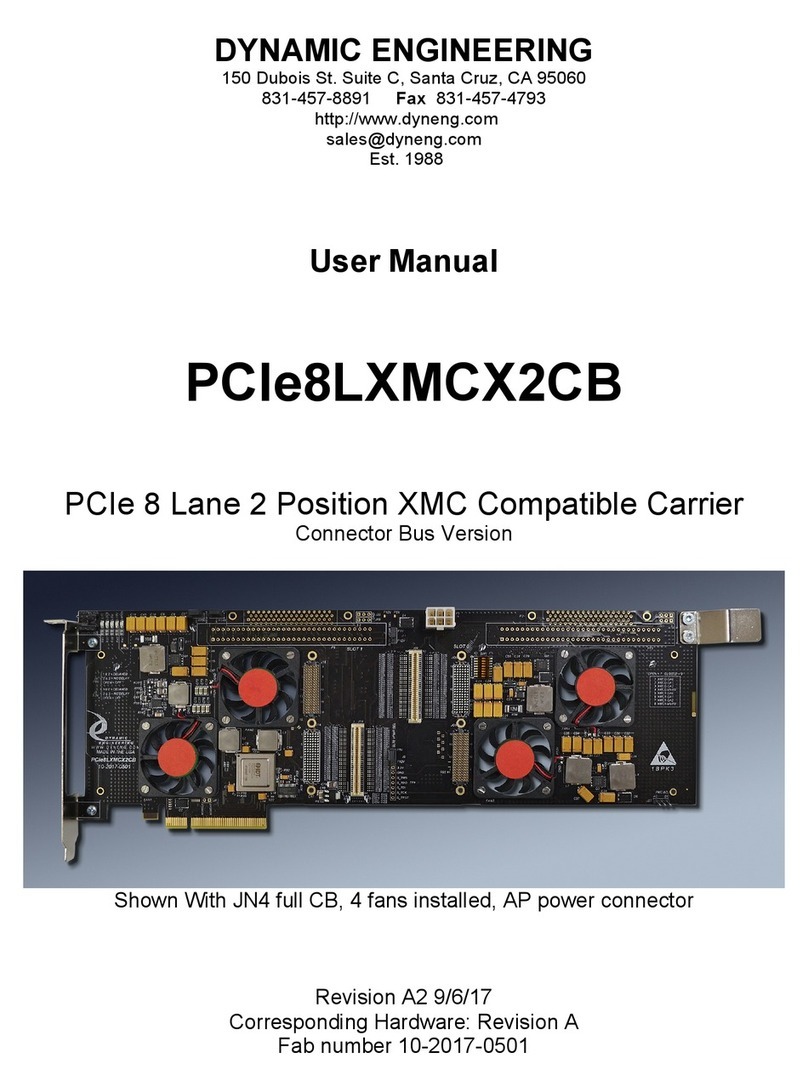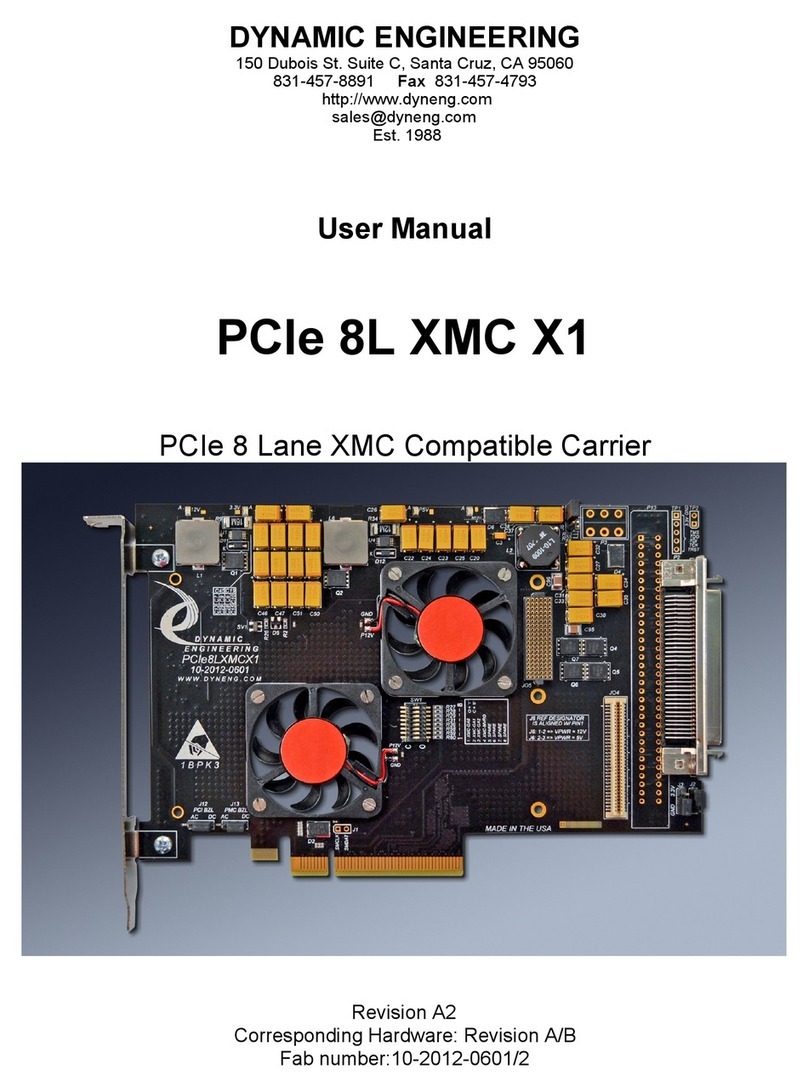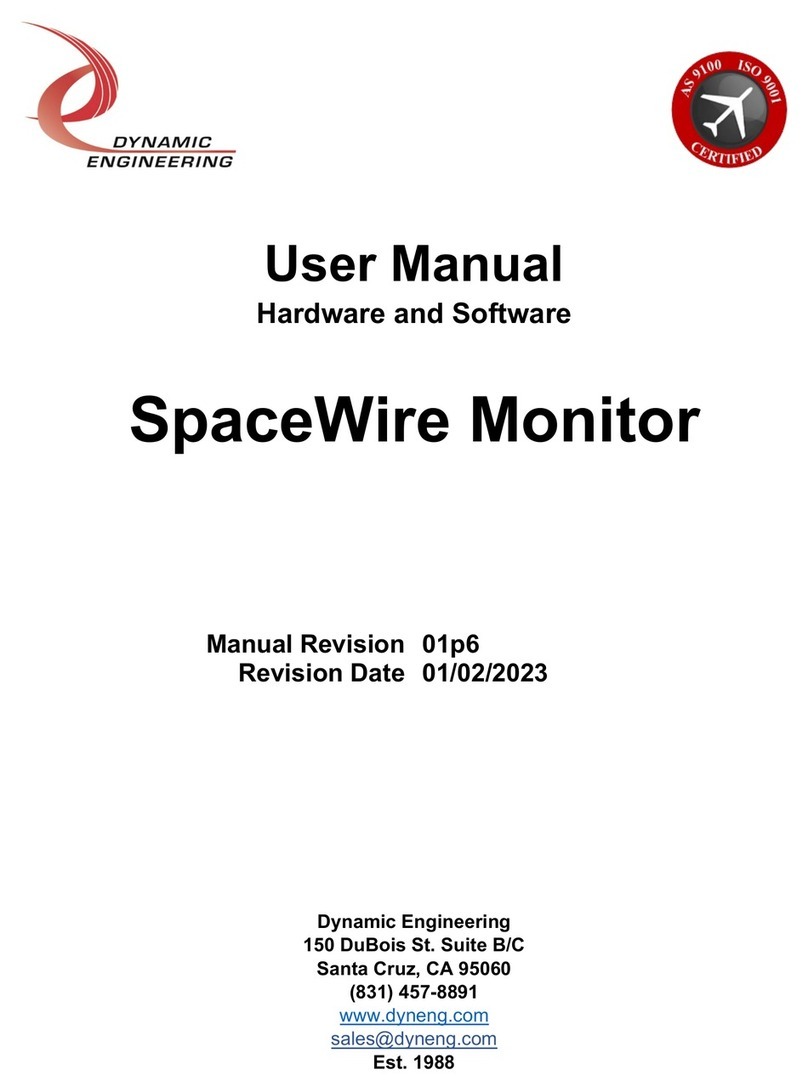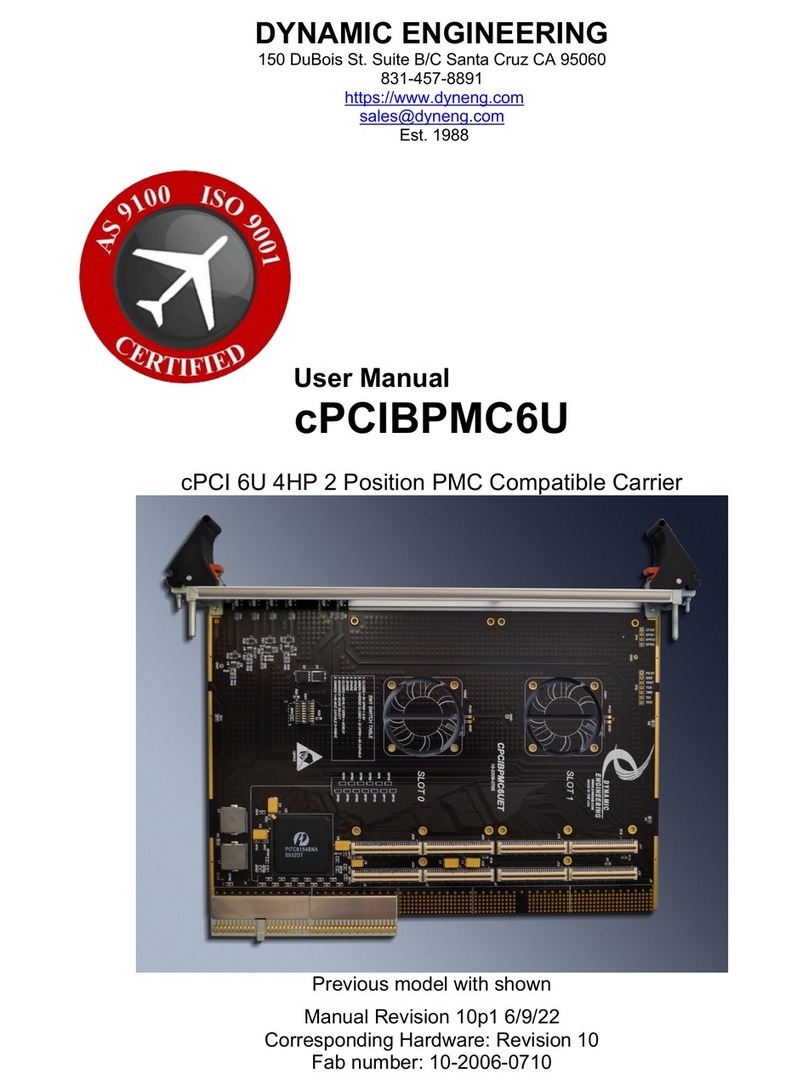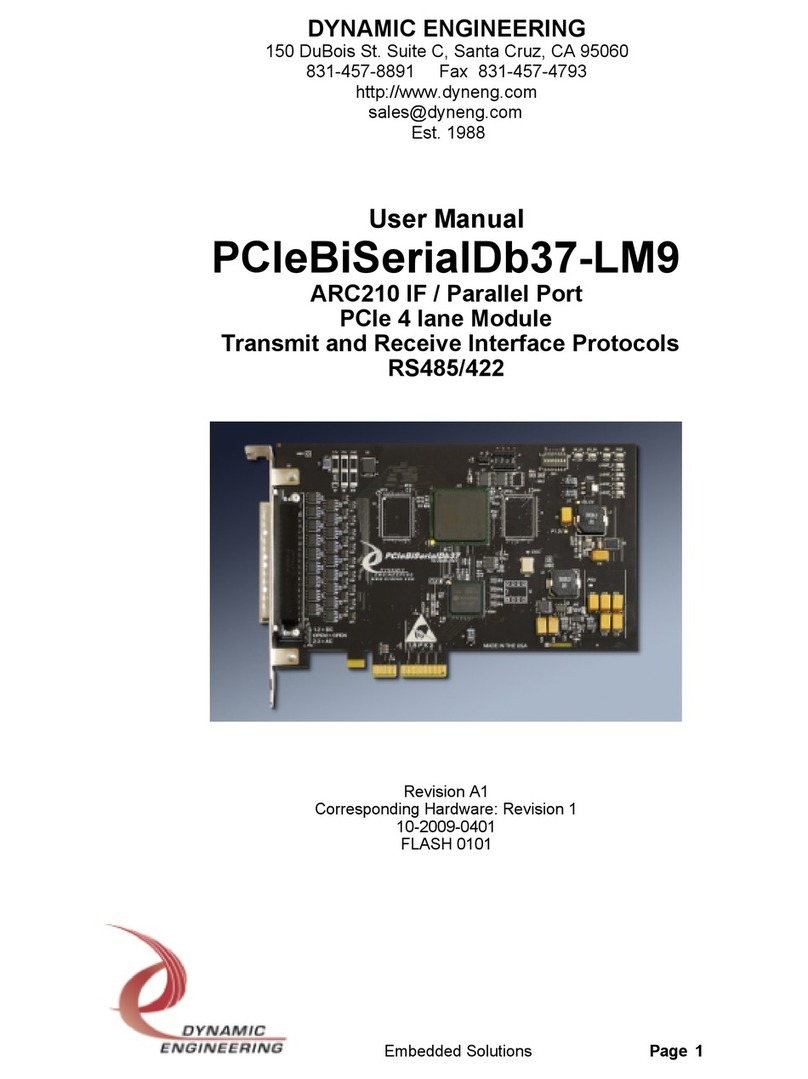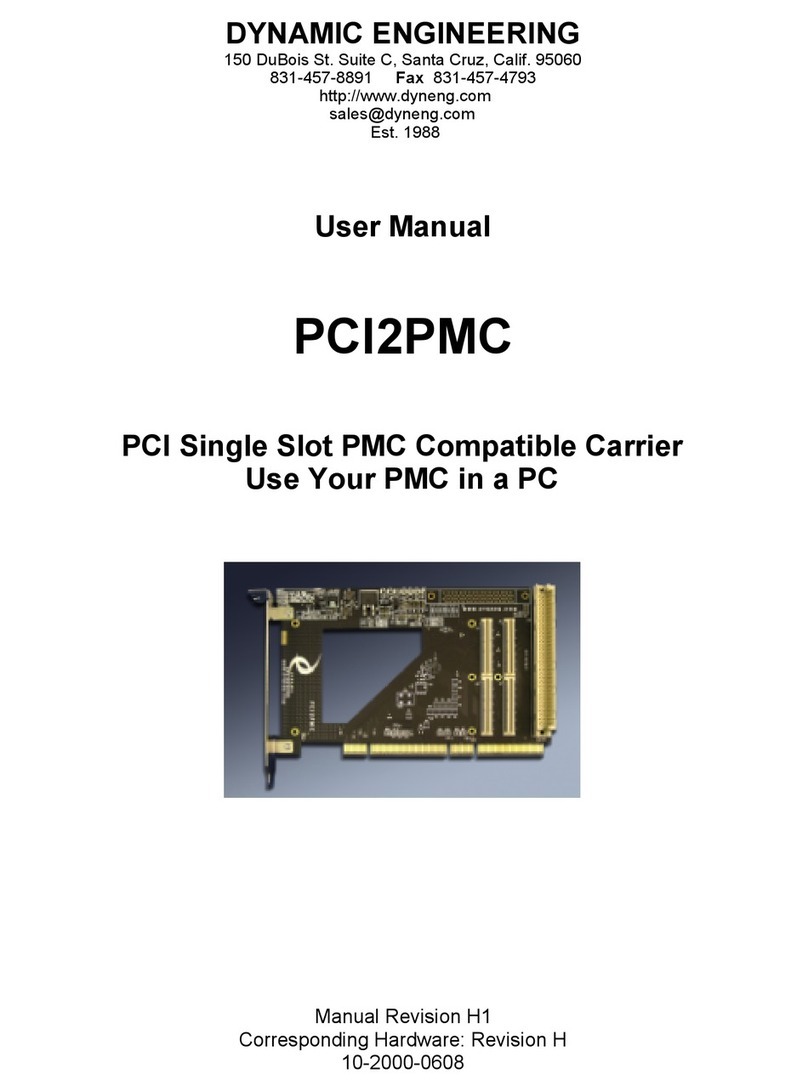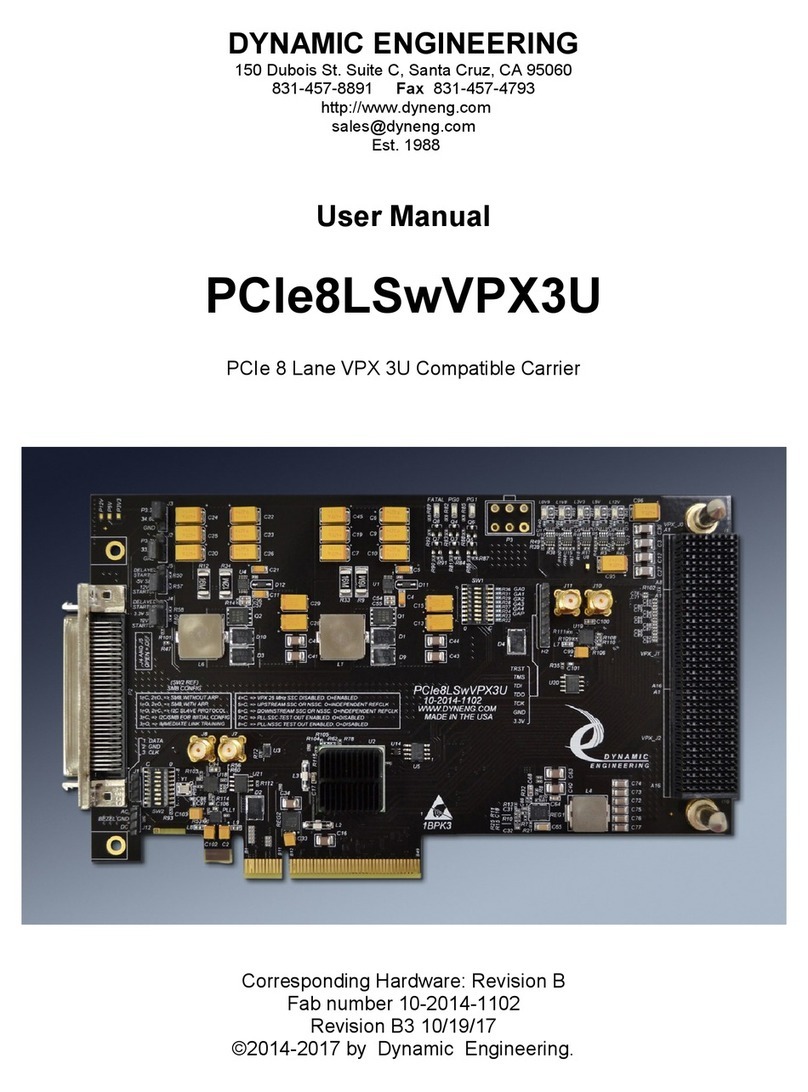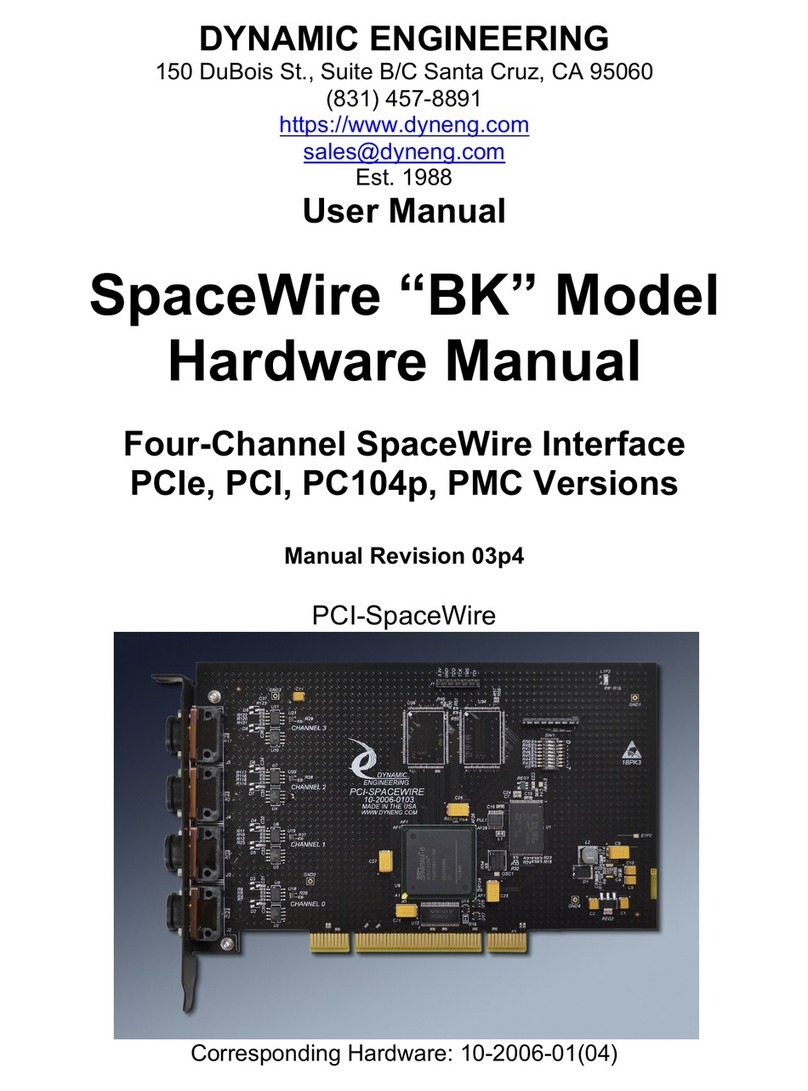
Hardware and Software Design • Manufacturing Services
page 4
Introduction
The PCI_LVDS_8R features 8 channels of LVDS input. Each input channel is composed of 3 serial data pairs plus a
reference clock. The reference clock can operate at speeds up to 175 MHz. The National DS90CR218 [TIA/EIA-
644] or equivalent receiver chip is used. The receiver converts the three parallel streams into 21 bit parallel
data. The PCI_LVDS_8R implements the lower two serial streams for a 14 bit parallel interface. The upper serial
stream and corresponding upper 7 bits are defined and routed to allow for future expansion and alternate
protocols to be implemented.
The LVDS channels are grouped two per Front End [FE] Xilinx. The FE Xilinx receives the data and performs data
filtering to allow programmed patterns to start capture and other patterns to be stored. The Data width is built
up from 14 to 16 bits with the addition of parity. The data samples are combined to form 32 bit words before
being written to the Input FIFO. There is one Input FIFO per LVDS channel. 1K x 32.
One Latch Xilinx handles 4 LVDS channels – the output from two FE Xilinx. The data is read from the Input FIFO by
the Latch Xilinx and either written to the SDRAM or to the Output FIFO. The data is read into the Latch Xilinx at 66
MHz and written to the SDRAM at 33 MHz. The data width is doubled from 32 bits to 64 bits in this path. The
Data can also be read from the SDRAM and written to the Output FIFO. When data is written to the Output FIFO
the width is 32 bits and the rate is 66 MHz. The Address Generator controls the Latch Xilinx and the SDRAM.
The data from the output FIFO can be read directly or as a DMA stream.
The Address Generator is used to control the Latch Xilinx [data path], and provide the address control for the
SDRAM. After Power-Up the Address Generator provides the control words to the SDRAM to initialize operation
and then the proper control sequences for refresh and burst access. In Capture mode the Address Generator
polls the Input FIFOs for data to be transferred into the SDRAM. When a FIFO’s Half-Full flag is set, data is
transferred from the FIFO through the Latch Xilinx into the SDRAM. In Retrieve mode the data is read from the
SDRAM and loaded into the Output FIFO. The Output FIFO is polled to see if there is room for the next burst of
data. In Direct mode the data is moved from the Input FIFO through the Latch Xilinx to the Output FIFO without
using the SDRAM.
